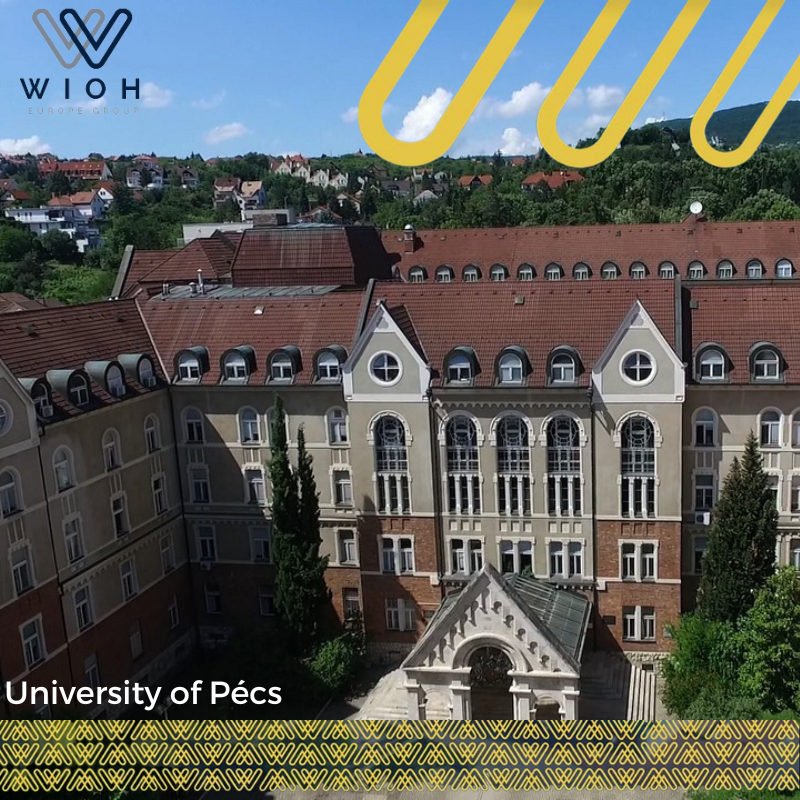College of International and Political StudiesCollege of International and Political StudieMolecular BiotechnologyFaculty of Physics, Astronomy and Applied Computer ScienceA prestigious university in the city of Krakow in Poland, the oldest university in Poland, and the second oldest university in Central Europe, has included many Polish intellectuals, political leaders and well-known international personalities, it is the Jagiellonian University of UJ.
University Ranking:
Within the range of 800-601 according to (THE WORID) for the year 2020
And within the range of 401-500 according to (ARWU) for the year 2020
And ranked 326 according to (QS) for the year 2021
University history:
Founded on May 12, 1364 by King Casimir III. The Jagiellonian University then consisted of eleven departments, eight of which were legal, two medical, and a liberal art department. No permission was obtained from the Pope for the establishment of the Department of Theology.
The President of Krakowski Jagiellonian University, the Chancellor of the Kingdom, was appointed to develop the university and increase its activity. Then the rector of the oldest university in Europe actively began to conduct construction and organizational work. But soon after Casimir’s death, she was suspended. The period after the reign of the king of Hungary was not the most favorable for the educational institution.
In 1400 the university resumed its activities, this happened thanks to the help of Queen Jadwiga, at the request of the King of Poland this educational institution was reopened. It was in his honor that the university was named after him, and the fact that he started working again was of great importance to Poland.
King Jagilo strongly supported the Lithuanians coming to Krakow to study. In 1409 he even instructed to allocate a small house, which could accommodate poor students, especially those who came from Russia.
Jagiellonian University became the main high school for young people.
Until the middle of the fifteenth century there were about seventy young Lithuanians who came from the petty-bourgeois class, as well as some members of the nobility, including the princes Sapieha, Hedrojtsy, Svirsky and Golshanskaya.
Initially, the university was called Studium General, then it was renamed the Krakow Academy. And only in the XIX century it received its current name – Jagiellonian, which emphasized its connection with the royal dynasty.
Teaching staff:
Rector: Professor Jatzik Popel
Staff: It employs about 4,000 academic staff members
Students: The university has more than 50,000 students who receive higher education, of whom about 2,000 are foreigners.
Specializations: The university provides training in 46 fields and 170 specializations.
Campus
A beautiful historic campus that houses a museum of artwork, souvenirs and a rich collection of scientific papers. Three buildings each make up a university campus, the last of which was built on the university’s 60th anniversary. Magnus College is the oldest building in the university, a testament to the university’s longevity and a landmark in its history. Poland holds historical value, distinguished by its bright red brick walls, with a smooth surface and its walls adorned with rectangular openings as windows with corrugated gables and most impressively the chimneys that penetrate the roof.

The sanctuary is built four kilometers from the city center, near the Technological Park and the economic zone of Krakow.
Faculties:
The campus includes fifteen colleges with different organizational sub-structures
Where teaching and research are organized, and a number of other institutions may include faculties:
Law and Administration/ Medicine/ Pharmacy and Medical Analysis/ Healthcare/ Philosophy/ History/ Philology/ Polish Language and Literature/ Physics, Astronomy and Applied Computer Science/ Mathematics and Computer Science/ Chemistry/Biology and Earth Sciences / Management and Social Communication / International and Political Studies / Biochemistry, Biophysics and Biotechnology / University Center for Veterinary Medicine (joint faculty with Krakow Agricultural University) / National Center for Synchrotron Radiation S /
University’s library:
The Jagiellonian Library is the university’s greatest source of pride, its beginnings date back to the beginning of the university in 1364, and it was not limited to one central library, but had several smaller branches in the buildings of the different departments (the largest collection was in the Collegium Maius, where works related to theology and liberal arts retained).

After 1775, during the reforms of Komisja Edukacji Narodowej who established the world’s first Ministry of Education, many of the university’s small libraries were formally concentrated into a single public collection at Collegium Maius.
The library continued to grow thanks to the support of people such as Carol Joseph Théophile Streicher and Carol Streicher.
Its collections were published in 1812, and were recognized as a legal deposit library in 1832, equivalent to the Bodleian Library at Oxford University, Cambridge University Library or Trinity College Library at Dublin, and therefore had the right to receive a copy of any book issued by Polish publishers within Poland.

In 1940 the library finally got its own new building, which was later expanded on two occasions, most recently in 1995-2001
Krakowski Jagiellonian University has the largest collection of the oldest manuscripts in Poland. In the library of this higher education institution there are about six million storage units. In the chests there are manuscripts of the Middle Ages, including the “Baltasar Begem Code”, and even “De orbium coibestium orbium”, which belonged to the pen of Nicholas Copernicus.
There is also a rich collection of literature published by Polish samizdat during the period of the communist regime. The university library also includes the so-called “Berlikki” money, the status of which is still debated, as well as historical collections from the Prussian Imperial Collection.
Finally, the university library collections are enriched by the presence of the university archives, which go back to the foundation of the university itself, and record the entire history of its development to the present day.
University Museum
The history of the museum dates back to the fourteenth century when King Jagilo bought the university building with the money he inherited from his wife, Queen Jadwiga, to make it an educational institution.

The museum was reconstructed in the late 15th century as a late Gothic building surrounding a large courtyard bordered by porticos. In 1517 a well was built in the center of the courtyard. Professors lived and worked upstairs, while lectures were held downstairs.
In the 1890s, the Collegium Maius included among its students Nicholas Copernicus, the Renaissance astronomer and multiculturalist who would revolutionize European ideas about the universe.
Copernicus did not return to Krakow after his school days. But in the 1950s, the museum commissioned the construction of three massive instruments out of wood of the kind that Copernicus might have used – a tetragon, a tricolor, and a skeletal armillary sphere, all measuring the position of celestial bodies in the pre-telescope era. The majestic trio, 1.5-2.5 meters high, is a tribute to science like a statue of Copernicus’ salt deep in the ground.
The museum’s cultural significance
The Collegium Maius includes lecture halls, collegiate halls, professors’ quarters, a library and a treasury containing Gothic rectors, rock and Jagellon globes. Exhibits also include medieval scientific instruments, globes, paintings, collectibles, furniture, coins, and medals.
The Assembly Hall is considered the largest hall in Krakow. Under its arches, a scientific gash has never happened, but it has become historical.

University Features
There is an excellent financial base at the university, students have the opportunity to participate in many exchange programs, and the university also provides many scholarship programs.

It included well-known international figures such as Nicholas Copernicus and Pope John Paul II
A university graduate can get the best job opportunities in the best organizations and companies.
Jagiellonian University maintains an academic partnership with Heidelberg University, Germany’s oldest university. In particular, there are close links between the law schools in Heidelberg and Krakow. Jointly with Heidelberg and the Johannes Gutenberg University in Mainz, the Jagiellonian University offers courses in German Law.
Jagiellonian University has partnerships with many English universities such as the University of Cambridge, the University of Melbourne, the University of Chicago, and the University of California, Los Angeles.
As well as with French universities such as the Sorbonne University and the University of Montpellier. _ There are other cooperation agreements with Charles University Prague, University of Vienna, University of Tokyo, Saint Petersburg State University, Technical University of Munich, and Free University of Berlin.
The university is considered an archaeological and tourist landmark where its 650 years of experience in the educational field makes training in it a source of pride, as it is part of the Association of European Higher Education Institutions, moreover, it has a prestigious position among the universities of the world.






